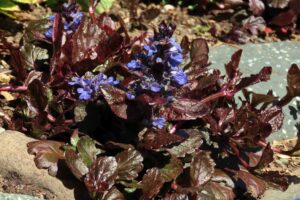| Description: Reasonably small, deciduous, understory tree with finely-toothed, 3 inch (7.6 cm) long, oval-lanceolate leaves, emerging with bronze tints in spring, gradually changing to dark green though summer before changing a brilliant red to orange-red in fall. Showy white flowers appear in April followed by edible 3/8-inch (9.5 mm) diameter edible berries which are a deep red-purple when fully ripe in late June through early July.
Special Notes: Amelanchier spp. are native to North America. Amelanchier x grandiflora is a hybrid cross between A. arborea (downy serviceberry) and A. laevis (Allegheny serviceberry), two species of North American serviceberries.
‘Princess Diana’, one of several named cultivars in this Amelanchier species, is known for its abundant floral display of white flowers, wide canopy and its vibrant fall colour. It was discovered in the mid-1980s in a garden in Elm Grove, Wisconsin. A U.S. Plant Patent PP6,041 was issued on October 20, 1987.
Pests and Diseases: There are no serious insect or disease problems, although amelanchiers can occasionally have problems with powdery mildew, leaf spot, rust, fire blight and canker. So far, our tree has not experienced any problems whatsoever. (Touch wood.)
In our Zone 7a garden: We absolutely adore this small tree in the back garden! It resides in the shadow of the ancient transparent apple tree and is further shaded by the 12 ft (3.6 m) tall cedar hedge. Still, the flowers appear in April and there always seems to be enough bees around at that time to perform their pollinating duties.
I keep a close watch on the berries when they start to come as I like to pick them for my Serviceberry Cobbler. (Click here for the recipe.) I have to be quick because the birds love these berries too, especially the cedar waxwings who make a point of arriving in our garden to feast on the serviceberries. Often, I am picking berries from the lower branches while several cedar waxwings are enjoying them above my head.
While I have yet to make jam or jelly from serviceberries, it is reported to be quite good. Perhaps I will attempt these preserves next season as we do love our Aronia Berry Jelly and Oregon Grape Jelly.
One good piece of information to note: serviceberries can be picked before they are fully ripe as they will finish ripening if laid out in newspaper-lined beer flats.
Royal Horticultural Society’s Award of Garden Merit 2012
Posted on October 20, 2021
|








